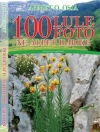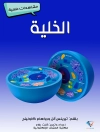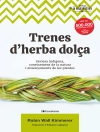Plant Breeding Reviews is an ongoing series presenting state-of-the art review articles on research in plant genetics, especially the breeding of commercially important crops. Articles perform the valuable function of collecting, comparing, and contrasting the primary journal literature in order to form an overview of the topic. This detailed analysis bridges the gap between the specialized researcher and the broader community of plant scientists.
Table of Content
Contributors.
1. Dedication: Dirk R. Vuylsteke, Musa Scientistand Humanitarian
(Rodomiro Ortiz).
I. Biographical Sketch.
II. Research Achievement.
III. The Man.
2. Epistasis and Plant Breeding (James B. Holland).
I. Introduction.
II. Gene Action and Statistical Effects.
III. Epistasis and Molecular Interactions.
IV. Complex Molecular Interactions Underlie Quantitative Phenotypes
(Sometimes).
V. Biometrical Evidence for Epistasis.
VI. Evidence for Epistasis from Plant Evolution Studies.
VII. Molecular Marker Investigations of Epistasis.
VIII. Why Is There More Evidence for Epistasis from QTLExperiments
than from Biometrical Studies?
IX. Implications of Epistasis for Plant Breeding.
Literature Cited.
3. Origin, History, and Genetic Improvementof the Snap Pea (Pisum
sativum L.) (James R. Myers, James R. Baggett, and Calvin
Lamborn).
I. Introduction.
II. Genetics of Snap Peas.
III. Breeding Objectives.
IV. Breeding Methods.
V. Traits of Special Concern.
VI. Molecular Markers and Transformation.
VII. Future Prospects.
Literature Cited.
4. Strawberry Biotechnology (Stan C. Hokanson and John L.
Maas).
I. Development of the Modern Strawberry.
II. Genetic Fingerprinting and Gene Tagging.
III. Mapping.
IV. In Vitro Biology, Genetic Transformation, and Gene
Cloning.
V. Future Prospects.
Literature Cited.
5. Contributions of DNA Molecular Marker Technologies to the
Genetics and Breedingof Wheat and Barley (Robert M. D. Koebner,
Wayne Powell, and Paolo Donini).
I. Introduction.
II. Molecular Markers in Genetic Diversity Studies in Wheat and
Barley.
III. Molecular Markers for Cultivar Identification.
IV. Marker Assisted Selection.
V. Marker-Based Genotyping in Crop Breedingand Genetics.
VI. The Future of Molecular Genotyping in Crop Breeding and
Genetics.
Literature Cited.
6. Diversity in Landraces of Cereal and Legume Crops (Awegechew
Teshome, A. H. D. Brown, and T. Hodgkin).
I. Introduction.
II. Geographic Divergence.
III. Factors Affecting Diversity.
IV. Conclusions.
Literature Cited.
7. Production and Evaluation of Hybrid Soybean (R. G. Palmer, J.
Gai, H. Sun, and J. W. Burton).
I. Introduction.
II. Flower Morphology and Pollination.
III. Insect-Mediated Cross-Pollination.
IV. Male Sterility.
V. Male Sterility as a Tool in Plant Breeding.
VI. Heterosis in Soybean.
VII. Discussion and Summary.
Literature Cited.
Subject Index.
Cumulative Subject Index.
Cumulative Contributor Index.
About the author
Jules Janick is the James Troop Distinguished Professor of Horticulture at Purdue University in West Lafayette, IN, USA.












